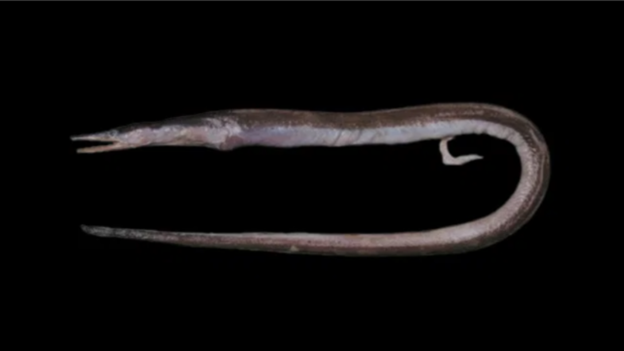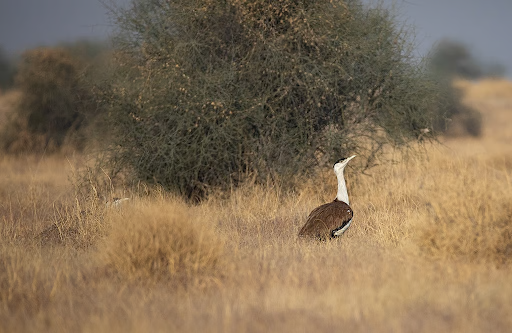



Indian scientists have discovered a new deep-sea eel species, Facciolella smithi, off the Kerala coast in the Arabian Sea at depths of 260–460 meters. Named after ichthyologist Dr. David G. Smith, the eel features a ribbon-like body, unique two-tone coloration, and adaptations like small eyes and regenerative tails suited for deep-sea survival.

Disclaimer: Copyright infringement not intended.
Indian scientists have discovered a new deep-sea eel species, Facciolella smithi (Smith’s witch eel), in the Arabian Sea.
|
Feature |
Description |
|
Scientific Name |
Facciolella smithi |
|
Discovery |
Discovered by scientists at ICAR–National Bureau of Fish Genetic Resources, Lucknow |
|
Habitat Location |
Off the Kerala coast in the Arabian Sea |
|
Depth Range |
260 to 460 meters |
|
Habitat Type |
Deep-sea; benthic – likely inhabits seafloor or burrows into soft sediments |
|
Family |
Nettastomatidae |
|
Naming Dedication |
Named in honour of ichthyologist Dr. David G. Smith for his contributions to eel taxonomy |
|
Feature |
Description |
|
Body Structure |
Elongate, ribbon-like body; reaches just over two feet in length |
|
Coloration |
Two-tone body – rich brown upper half and milky white underside; likely aids in camouflage |
|
Head and Snout |
Large head with duckbill-like snout, giving a prehistoric appearance |
|
Eyes and Vision |
Small eyes adapted to low-light deep-sea environment |
|
Teeth |
Cone-shaped teeth; suited for grasping slippery or soft-bodied prey |
|
Gill Openings |
Crescent-shaped, located behind the head; typical of many eel species |
|
Tail Regeneration |
Most specimens showed signs of regrown tails; indicates survival adaptation in a predator-rich or harsh environment |
ALSO READ- https://mapress.com/zt/article/view/55163
Source: krishijagran.com
|
PRACTICE QUESTION Q. Facciolella smithi, recently discovered off the Kerala coast, belongs to which of the following categories? A) Deep-sea coral B) Marine mammal C) Deep-sea benthic eel D) Freshwater amphibian Answer: C Explanation: Facciolella smithi is a deep-sea eel. Specifically, it belongs to the family Nettastomatidae, also known as the duckbill eel family. |






© 2026 iasgyan. All right reserved